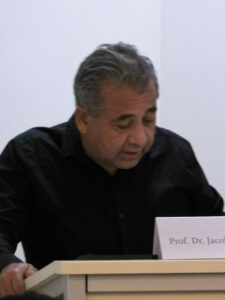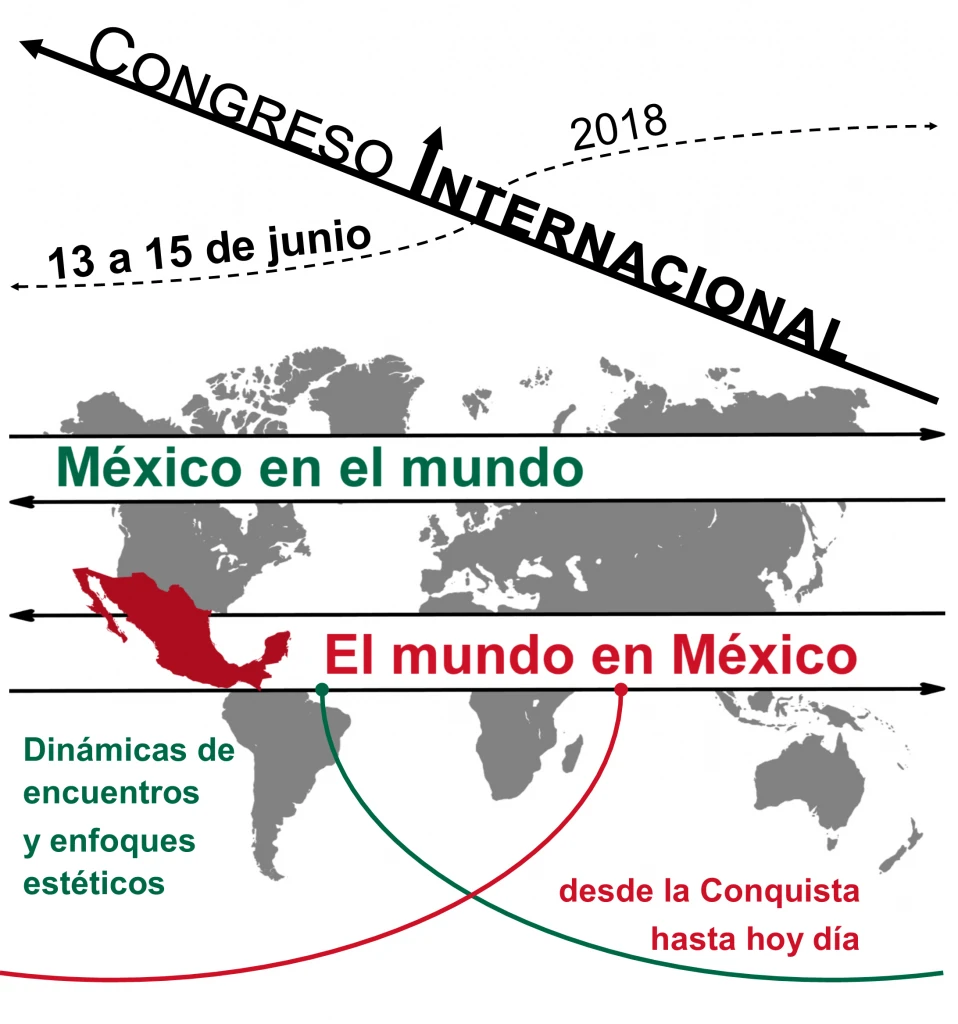De ida y vuelta: Myriam Moscona entre el pasado búlgaro-sefardí y el presente mexicano (pp. 155-165; DOI: 10.23692/iMex.19.11)
 Loading...
Loading...Prof. Dr. Jacobo Sefamí

Jacobo Sefamí is the grandson of Sephardic Jews who immigrated from Syria and Turkey to Mexico City. He studied his licenciatura at UNAM and his PhD at the University of Texas at Austin. He is currently Professor of Latin American literature at the University of California, Irvine, and Director of Middlebury College’s Summer School of Spanish. He is the author and editor of several books on Latin American poetry, including Medusario. Muestra de poesía latinoamericana (1996, co-edited with Roberto Echavarren and José Kozer), in addition to the novel Los dolientes (2004) and Vaquitas pintadas, an anthology of texts related to cows, later reproduced with images of Alicia Ceballos in Unidiversidad journal (Puebla, 2017). With Myriam Moscona, he edited Por mi boka. Textos de la diáspora sefardí en ladino (2013). His most recent publications include: Por tierras extrañas (2019), a book of stories, and travel chronicles to Turkey and Syria, El camaleón y la esponja: David Huerta. Entrevista, ensayos y antología poética (2019), and Mili, en lo inacabado mutante (poems, 2019).
This article studies the Sephardic sphere in the work of Myriam Moscona (Mexico City, 1955). It begins with an overview of this writer’s works, and then concentrates on two of her fundamental books on the subject: Tela de sevoya (2012) and Ansina (2015). The idea of displacement or wandering is explored not only as a family motive but also as the engine that nurtures the various explorations that Moscona has carried out throughout her oeuvre. Tela de sevoya is analyzed as a multivalent novel in which dispossession, loss, death, distress, and diaspora are explored, both as autobiographical reflections and in the broader scope of Judeo-Spanish. Ansina’s poems demystify the Sephardic nostalgic cliché to place themselves into the contemporaneity of Mexican poetry, through irony, humor and criticism of writing itself.
Este artículo estudia el ámbito sefardí en la obra de Myriam Moscona (Ciudad de México, 1955). Comienza con un recorrido de la trayectoria de esta escritora para luego concentrarse en dos de sus libros fundamentales al respecto: Tela de sevoya (2012) y Ansina (2015). Se explora la idea del desplazamiento o de la errancia no solo como motivo familiar sino como el motor que nutre las diversas exploraciones que ha llevado Moscona a lo largo de su obra. Se analiza Tela de sevoya como una novela plurivalente en donde se explora el despojo, la pérdida, la muerte, la desazón, la diáspora, tanto como reflejos autobiográficos como en el ámbito más amplio del judeo-español. Los poemas de Ansina desmitifican el cliché nostálgico sefardí para insertarse en la contemporaneidad de la poesía mexicana, a través de la ironía, el humor y la crítica de la escritura misma.
Articles
Vittoria Borsò – Repensar la globalizacion desde la literatura mexicana
Gesine Müller – Paz entre literatura mundial y literaturas del mundo
Anne Kraume – Altamirano y los trenes
Sara Poot Herrera – Arreola y su estética del zigzag
Hermann Herrlinghaus – La búsqueda de otra dimensión de la realidad
José Ramón Ruisánchez Serra – Apercepción en Amado Nervo
Edith Negrín – Traven: primer encuentro con los indios mexicanos
Roger Friedlein – Estrategias de personalización en literaturas nacionales
Lizette Jacinto – Exilio político germanoparlante
Jacobo Sefamí – De ida y vuelta: Myriam Moscona
Stephanie Schütze – Guadalupe Tonantzin: una santa transcultural
Tanius Karam Cárdenas – Entre muros y túneles: necropolítica en México
Sandra L. López Varela – Etnoarqueología para el combate a la pobreza
Sandra del Pilar – El sueño incobrable de la transparencia absoluta


